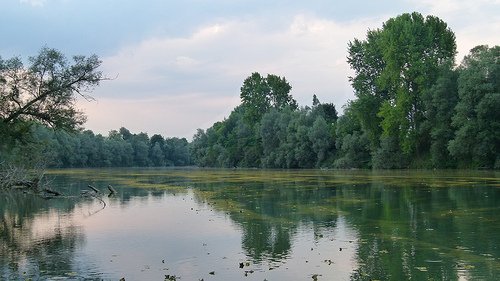
River discharges are the main expression of the hydrological cycle and are the results of climate natural variability. The signal of climate changes occurrence raises the question of how it will impact on river flows and on their extreme manifestations: floods and droughts. This question can be addressed through numerical simulations spanning from the past (1971) to future (2100) under different climate change scenarios.
In a new study recently published on the book Evolving Water Resources Systems: Understanding, Predicting and Managing Water–Society Interactions (Proceedings of ICWRS2014, Bologna, Italy, June 2014 – IAHS Publ. 364, 2014), a publication of the “Red Books” series of the International Association of Hydrological Sciences (IAHS), a team of scientists (among them, CMCC researchers R. Vezzoli, P. Mercogliano, M. Montesarchio, A. L. Zollo evaluated the capability of a modelling chain to reproduce the observed discharge of the Po River over the period 1971–2000.
The aim of these first simulations was to quantify the uncertainties introduced by each component of the modelling chain and their propagation. Estimation of the overall uncertainty is in fact relevant to correctly understand the future river flow regimes. The results showed how bias correction algorithms can help in reducing the overall uncertainty associated to the different stages of the modelling chain.
The abstract of the paper:
River discharges are the main expression of the hydrological cycle and are the results of climate natural variability. The signal of climate changes occurrence raises the question of how it will impact on river flows and on their extreme manifestations: floods and droughts. This question can be addressed through numerical simulations spanning from the past (1971) to future (2100) under different climate change scenarios. This work addresses the capability of a modelling chain to reproduce the observed discharge of the Po River over the period 1971–2000. The modelling chain includes climate and hydrological/hydraulic models and its performance is evaluated through indices based on the flow duration curve. The climate datasets used for the 1971–2000 period are (a) a high resolution observed climate dataset, and COSMO-CLM regional climate model outputs with (b) perfect boundary condition, ERA40 Reanalysis, and (c) suboptimal boundary conditions provided by the global climate model CMCC–CM. The aim of the different simulations is to evaluate how the uncertainties introduced by the choice of the regional and/or global climate models propagate in the simulated discharges. This point is relevant to interpret the results of the simulated discharges when scenarios for the future are considered. The hydrological/hydraulic components are simulated through a physically-based distributed model (TOPKAPI) and a water balance model at the basin scale (RIBASIM). The aim of these first simulations is to quantify the uncertainties introduced by each component of the modelling chain and their propagation. Estimation of the overall uncertainty is relevant to correctly understand the future river flow regimes. The results show how bias correction algorithms can help in reducing the overall uncertainty associated to the different stages of the modelling chain.
Read the integral version of the paper:
R. Vezzoli, M. Del Longo, P. Mercogliano, M. Montesarchio, S. Pecora, F. Tonelli e A.L. Zollo
Hydrological simulations driven by RCM climate scenarios at basin scale in the Po River, Italy
Evolving Water Resources Systems: Understanding, Predicting and Managing Water–Society Interactions, Proceedings of ICWRS2014, Bologna, Italy, June 2014 (IAHS Publ. 364, 2014).


